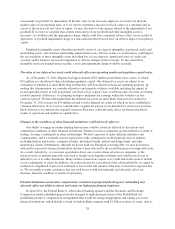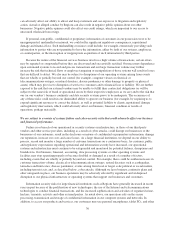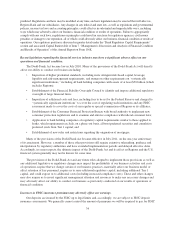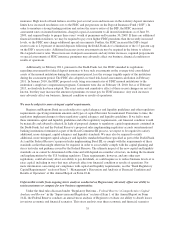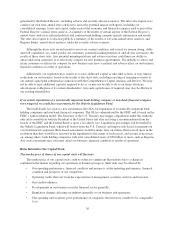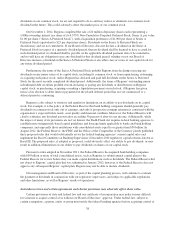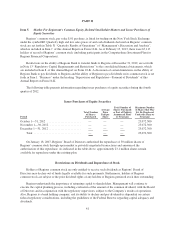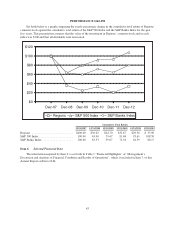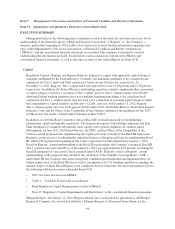Regions Bank 2012 Annual Report Download - page 52
Download and view the complete annual report
Please find page 52 of the 2012 Regions Bank annual report below. You can navigate through the pages in the report by either clicking on the pages listed below, or by using the keyword search tool below to find specific information within the annual report.generated by the Federal Reserve, including adverse and severely adverse scenarios. The rules also require us to
conduct our own semi-annual stress analysis to assess the potential impact on Regions, including our
consolidated earnings, losses and capital, under each of the economic and financial scenarios used as part of the
Federal Reserve’s annual stress analysis. A summary of the results of certain aspects of the Federal Reserve’s
annual stress analysis is released publicly and contains bank holding company specific information and results.
The rules also require us to disclose publicly a summary of the results of our semi-annual stress analyses, and
Regions Banks’ annual stress analyses, under the severely adverse scenario.
Although the stress tests are not meant to assess our current condition, and even if we remain strong, stable
and well capitalized, we cannot predict our customers’ potential misinterpretation of, and adverse reaction to, the
results of these stress tests. Any potential misinterpretations and adverse reactions could limit our ability to
attract and retain customers or to effectively compete for new business opportunities. The inability to attract and
retain customers or effectively compete for new business may have a material and adverse effect on our business,
financial condition or results of operations.
Additionally, our regulators may require us to raise additional capital or take other actions, or may impose
restrictions on our business, based on the results of the stress tests, including rejecting or requiring revisions to
our annual capital plan submitted in connection with the Comprehensive Capital Analysis and Review. We may
not be able to raise additional capital if required to do so, or may not be able to do so on terms which are
advantageous to Regions or its current shareholders. Any such capital raises, if required, may also be dilutive to
our existing shareholders.
If an orderly liquidation of a systemically important bank holding company or non-bank financial company
were triggered, we could face assessments for the Orderly Liquidation Fund.
The Dodd-Frank Act creates a new mechanism, the OLA, for liquidation of systemically important bank
holding companies and non-bank financial companies. The OLA is administered by the FDIC and is based on the
FDIC’s bank resolution model. The Secretary of the U.S. Treasury may trigger a liquidation under this authority
only after consultation with the President of the United States and after receiving a recommendation from the
boards of the FDIC and the Federal Reserve upon a two-thirds vote. Liquidation proceedings will be funded by
the Orderly Liquidation Fund, which will borrow from the U.S. Treasury and impose risk-based assessments on
covered financial companies. Risk-based assessments would be made, first, on entities that received more in the
resolution than they would have received in the liquidation to the extent of such excess, and second, if necessary,
on, among others, bank holding companies with total consolidated assets of $50 billion or more, such as Regions.
Any such assessments may adversely affect our business, financial condition or results of operations.
Risks Related to Our Capital Stock
The market price of shares of our capital stock will fluctuate.
The market price of our capital stock could be subject to significant fluctuations due to a change in
sentiment in the market regarding our operations or business prospects. Such risks may be affected by:
• Our operating performance, financial condition and prospects, or the operating performance, financial
condition and prospects of our competitors;
• Operating results that vary from the expectations of management, securities analysts and investors;
• Our creditworthiness;
• Developments in our business or in the financial sector generally;
• Regulatory changes affecting our industry generally or our business and operations;
• The operating and securities price performance of companies that investors consider to be comparable
to us;
36




